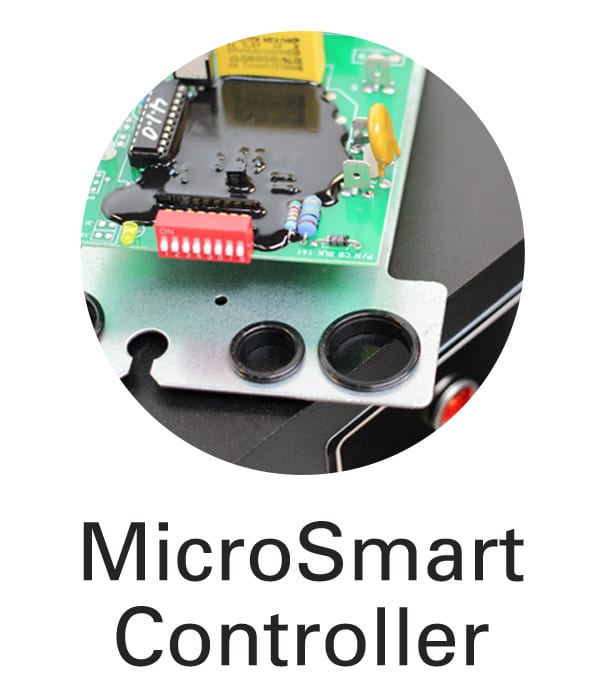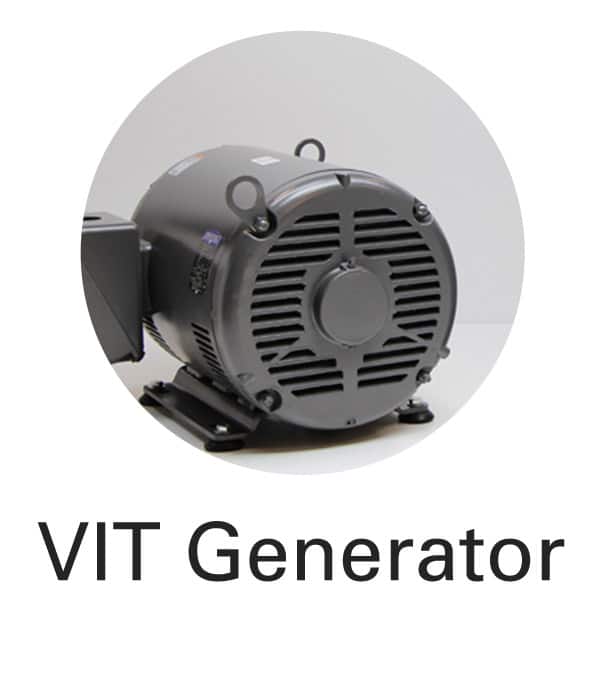We hear many questions and misconceptions about the efficiency and quality of the power supplied by phase converters.
For example, you might have heard that phase converters draw a huge inrush current upon start-up. This disproportionate power draw can end up bothering neighbors by dimming their lights. It can also lead to demand charges and large increases on power bills.
These issues highlight why it’s important to look for a phase converter that has variable impedance technology built directly into the idler/generator. This design drastically reduces inrush (starting) current, resulting in reliable starts, every time, with no voltage drop. Read more about the advantages of this rotary phase converter setup.
Unfortunately, many phase converter manufacturers claim that they have such technology, when they instead use a regular stock motor, rewire it for low voltage, and cut off the exposed rotating shaft, which is also a huge safety hazard. This article can help you identify which type of idler motor a phase converter uses.
HOW EFFICIENT IS A ROTARY PHASE CONVERTER?
A rotary phase converter, particularly one that incorporates digital control, can be an efficient way to provide three-phase utility to your shop.

For example, American Rotary’s digital rotary phase converter lines (AD, ADX, and AI) feature the patented MicroSmart Controller. This digital controller monitors and controls your voltages across the three phases/legs of power, providing precise voltage balance to your equipment and adding additional fail-safe features to your phase converter operation.
With MicroSmart Controller, you can expect to see voltages around a 2-5% balance across the three legs.
This voltage balance is important, especially because voltage variations over 5% can damage some equipment, especially CNC machines. Therefore, even a small imbalance can necessitate a large reduction in motor power to protect the equipment.
By monitoring your voltage every 50 milliseconds and providing better voltage control, this helps prolong the life of your converter, allows significantly more load capacity (ADX and AI), and will run your equipment more efficiently.
With all American Rotary phase converters, they use a custom-designed induction generator as their idler. The VIT Generator is a true soft start idler that uses 1/3 of the inrush current of a comparable three-phase motor.
This virtually eliminates demand charges from the utility and that dreaded dimming of the neighbor’s lights—allowing you to run the phase converter 24/7 at little to no load without any negative effects. These idlers run very smoothly, quietly and efficiently.

Lastly, this technology produces a true three-phase sine wave, allowing you to run your equipment on full three-phase power off a single-phase power source. You will have a voltage balance of about 5% or greater when measured leg to leg, which makes it suitable for CNC and other voltage sensitive applications. The approximate cost of running a rotary phase converter is $0.12 per kWh.
Compare that to the $50,000 installation of three-phase utility power, with average usage cost of about $0.10 per kWh, plus minimum usage requirements and demand charges. With utility three-phase power, your power quality is roughly at a 10% voltage balance across the three legs.
Clearly, if the three-phase utility is a route you choose, it’s a good idea to do a true cost analysis to know all of your costs upfront before investing in having it brought in.

